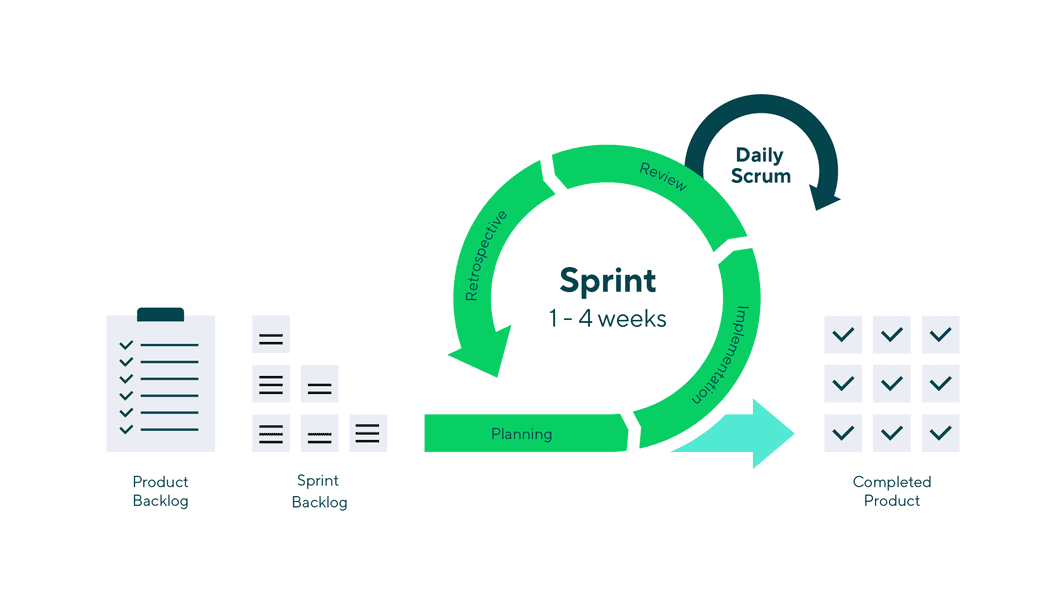Scrum is a methodological approach to software development that emphasises flexibility and cross-functionality. The approach promotes cross-functional collaboration between members of the same team. However, it can be confusing for newcomers. Here are some things you should know before trying to implement Scrum in your own project.
Scrum is a methodological approach to software development
The Scrum method is an agile development methodology that allows developers to produce better quality software. The Scrum framework requires that developers produce a functional version of a software product after each iteration. As a result, it allows developers to predict the time it will take to complete a project and identify potential risks ahead of time. The Scrum framework also encourages self-organization and autonomy among team members.
Scrum also makes it easier to coordinate teams and work collaboratively on complex projects. It defines three roles for a development team: the product owner, the ScrumMaster, and the team. The Scrum Master is the coach of the team. Each member has a specific role to perform.
It emphasises cross-functionality
SCRUM emphasises the value of cross-functionality in product development, and it can be helpful for teams to include individuals with different domain and technical expertise. These teams can work collaboratively to achieve their common goal, and they are more likely to achieve higher productivity and flexibility. Although cross-functional teams are beneficial, they are not mandatory.
The idea behind Scrum came from a Harvard Business Review article by Hirotaka Takeuchi and Ikujiro Nonaka, who were comparing two different approaches to product development. In the former approach, teams work together in an organised, straight line, passing the project back and forth. In the latter approach, teams are empowered and self-managed, and they are expected to make adjustments and improvements to their processes when necessary.
It is non-hierarchical
SCRUM is a collaborative process for software development teams. This method places emphasis on horizontal collaboration and iteration, rather than rigid processes and hierarchies. This method is becoming popular in tech companies, with most of them adopting distributed adaptive methods of working. Here are some of the most important aspects of Scrum.
In SCRUM, teams are composed of people from various departments. Each member of the team is treated equally. Because SCRUM is non-hierarchical, teams are cross-functional, self-organising, and empowered to work independently. This means that team members can collaborate freely and effectively, without having to wait for approval from management.
Scrum uses five principles and values to guide its work. These principles are essential to Scrum and should be adhered to consistently throughout every project. The values are also reflected by the individuals on a team.
It is flexible
One of the most important benefits of SCRUM is its flexibility. Teams can begin with a small set of stories and add new ones as necessary, based on user feedback, market trends, or new technology. In this way, the team can be more productive, since it doesn’t have to follow a strict schedule.
In addition to being flexible, SCRUM emphasises detailed specifications and regular face-to-face communication. Scrum teams meet daily to discuss their progress and identify any bottlenecks. Teams can even establish rituals, such as retrospectives and planning sessions, to facilitate better communication and collaboration. This allows team members to identify and react to change, which is essential in agile development.
A sprint consists of two to four weeks of work. The product owner should add details as the sprint progresses. This will help the scrum team plan out the strategies and activities that need to be undertaken during the sprint.
It can be scaled – without much difficulty
SCRUM is an Agile process that can be scaled to meet the demands of large organisations. Scaling Scrum involves replicating the work of one Scrum team across multiple teams, thereby increasing the efficiency of the organisation. This also ensures transparency of the product development process, which in turn provides more value to the user.
When you start a Scrum project, you may have multiple product teams working on the same project. In these cases, the Scrum Master will facilitate cross-team coordination and deployment of the product. The Scrum Master will also facilitate the continuous improvement and removal of impediments that could impede the progress of the project.
Scaling Scrum involves a variety of techniques, including the use of a “scrum of scrums” meeting, which brings together clusters of teams to coordinate their work. These meetings are crucial in scaling Scrum to large project teams. They allow teams to focus on areas of overlap and integration.

